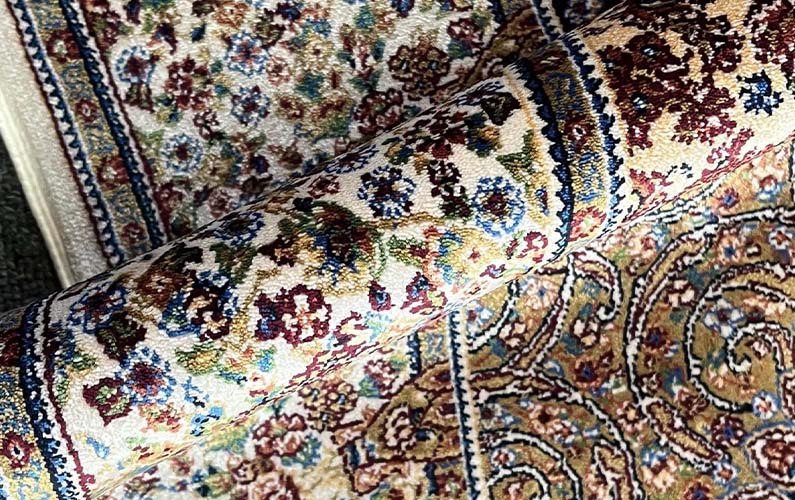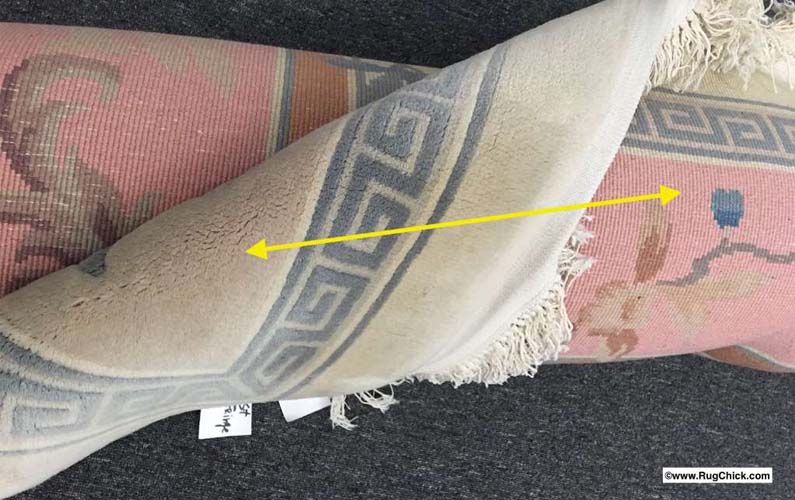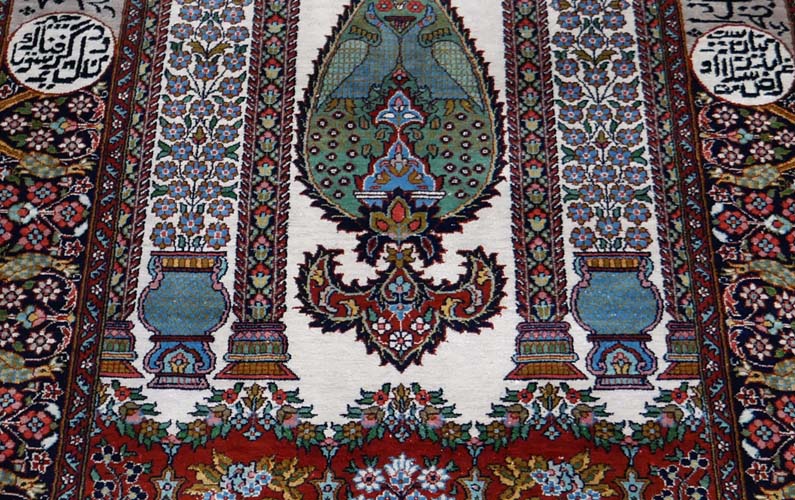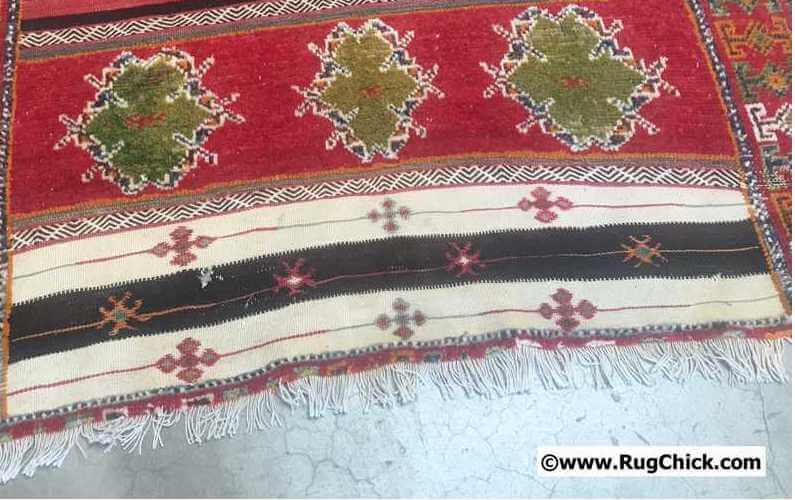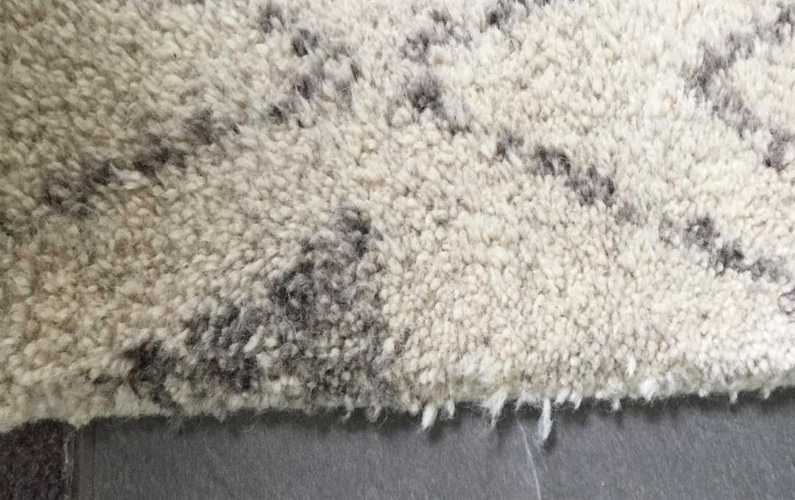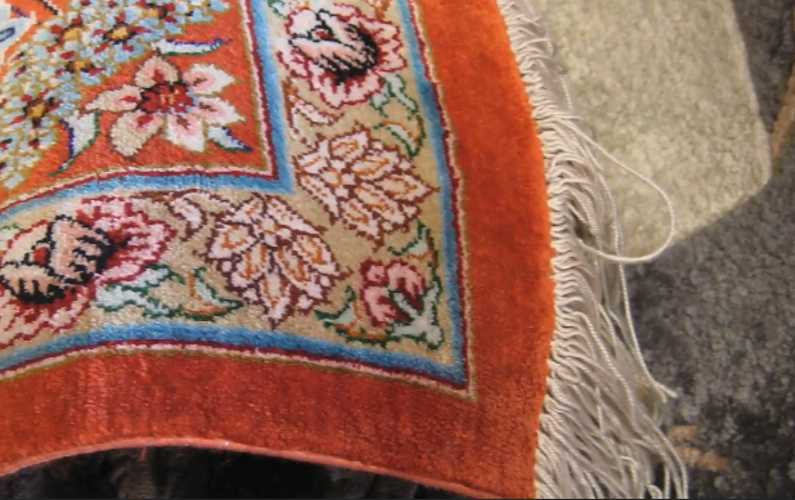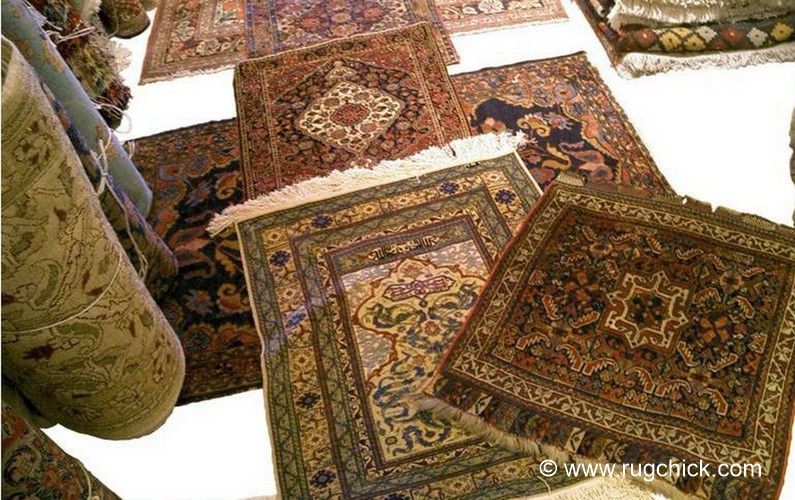Why some rugs buckle
I receive a lot of “help me” calls from rug cleaners and rug owners on rugs that are buckling. They want to know what to do.
And my answer is usually… it depends.
That’s because there are a number of reasons why a rug is buckling on someone. Some of these reasons are correctable. Others are not.
Here is the list of different causes of buckling:
Weaving Characteristics
No hand woven rug is perfectly symmetrical. There will always be a little bit of variance in the width and length, and some fluctuation in the weaving tension throughout the rug itself.
A city rug (woven in rug factories in weaving cities) will of course have more quality control than rugs woven by tribal weavers. I personally prefer the tribal rugs because they have more character and personality.
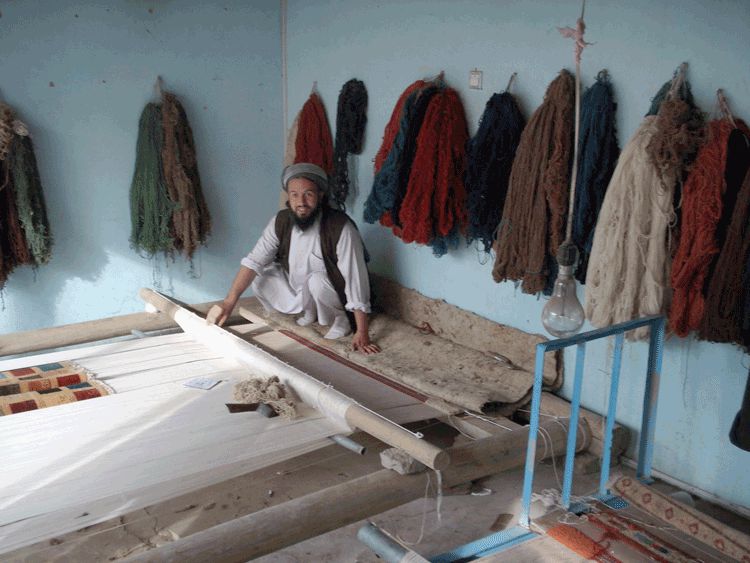
Weaver using a horizontal loom.
That said, in some tribal weaving centers, especially in areas that are war-torn like Afghanistan, the consistency can vary beyond being an interesting weaving characteristic to being seen as a weaving flaw in some extreme cases:
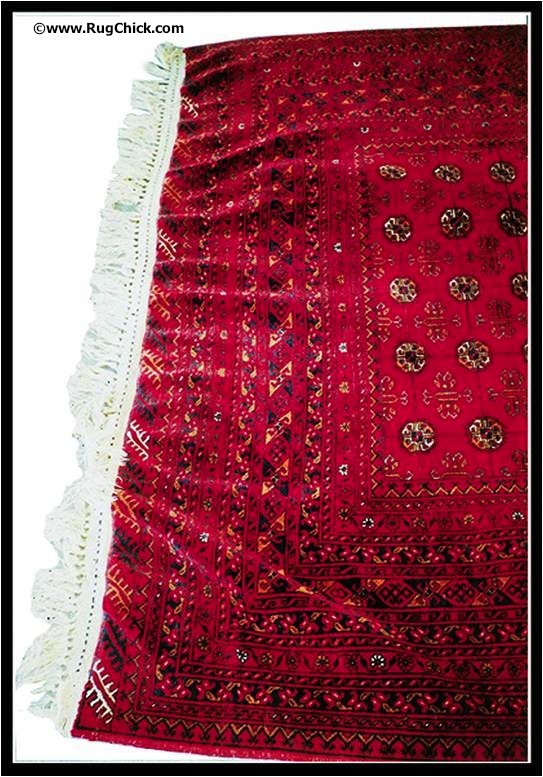
Tension along end of this Afghan rug causes buckling.
Buckling from weaving tension changes, or width or length variations, are not unique to Afghanistan. You see examples of this in all weaving countries. And in most cases they are seen as unique characteristics of a rug’s personality. Like a few great laugh lines on a smiling face, or dimples, they are what make the rug have character.
And as with those lines or dimples, you can’t just take a steam iron and make those go away. There is no “Rug Botox” to use.
Sometimes a weaver – especially if the loom is a nomadic one – will not know the rug has a “buckling” problem until after it is completed and cut off the loom. In some cases a rug manufacturer will apply a sizing to the rug (similar to starch) to try to make the rug stiffer than it would naturally be.
The problem with sizing is that it will wash out, and it may be difficult to have it re-applied. So if you are buying a rug, or you are getting ready to clean a rug, you want to look closely at the shape of the rug and if you see any evidence of problems on the BACK side.
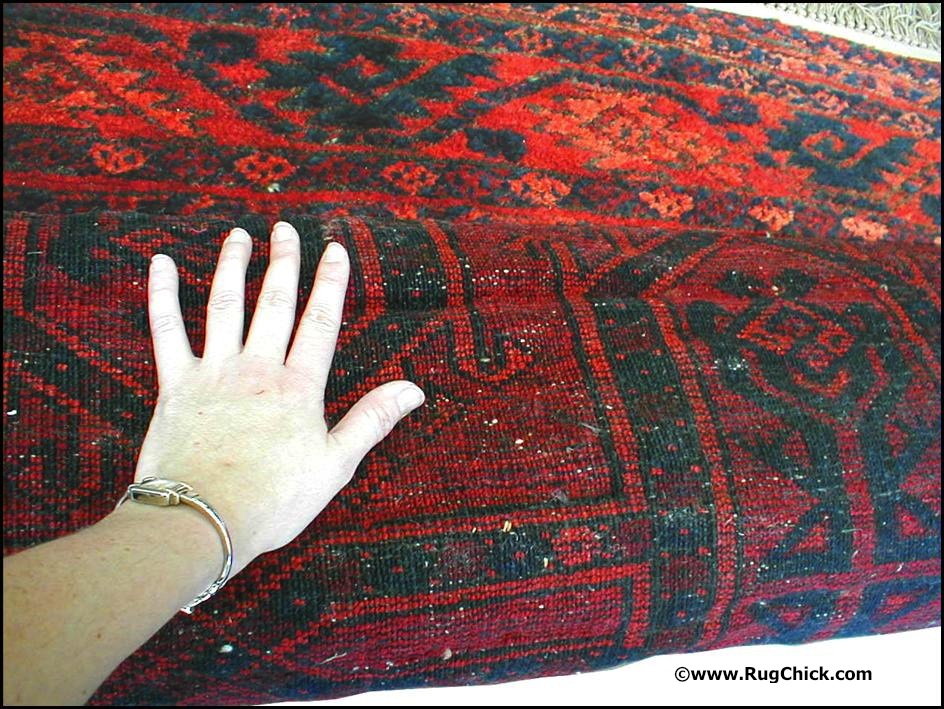
Creases can be clearly seen on the back of this Afghan rug. These are causing buckling on the front.
Sometimes a rug can be stretched to help it lay flatter, but this is a strenuous process that may damage the rug.
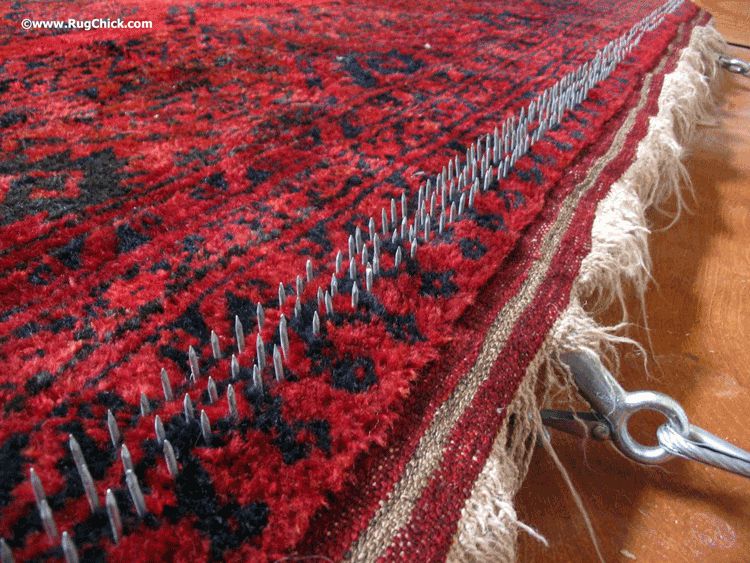
Stretching an Afghan rug to help it lay flatter.
In these cases you need to think about weaving variations as no different than one of your feet being a bit larger than the other. Think of what you would need to do to try to make them perfectly equal, and then apply that though to a rug, on the work that would be needed to make a side that may be an inch longer than the opposite one even.
It is often impossible to do. So your expectations need to be realistic, and if the variations are too much, then pass on purchasing the rug.
Material Backings
With embroidery, needlepoint, and hooked rugs, the buckling is often due to the construction especially if that construction includes a heavy material backing.
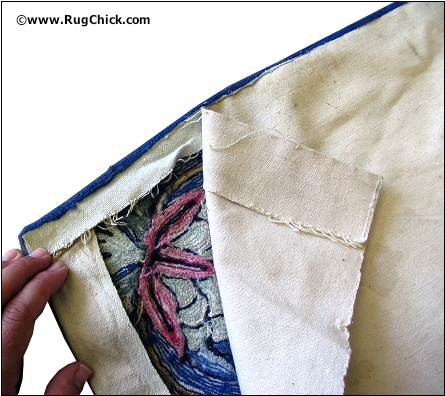
Embroidery needlepoint rug with a heavy cotton backing.
This type of weaving, though often very elegant, can also often not be perfectly symmetrical. And when you have two independent pieces – the hand crafted needlework and the material backing – that are loosely stitch to one another, this can create some buckling and waves.
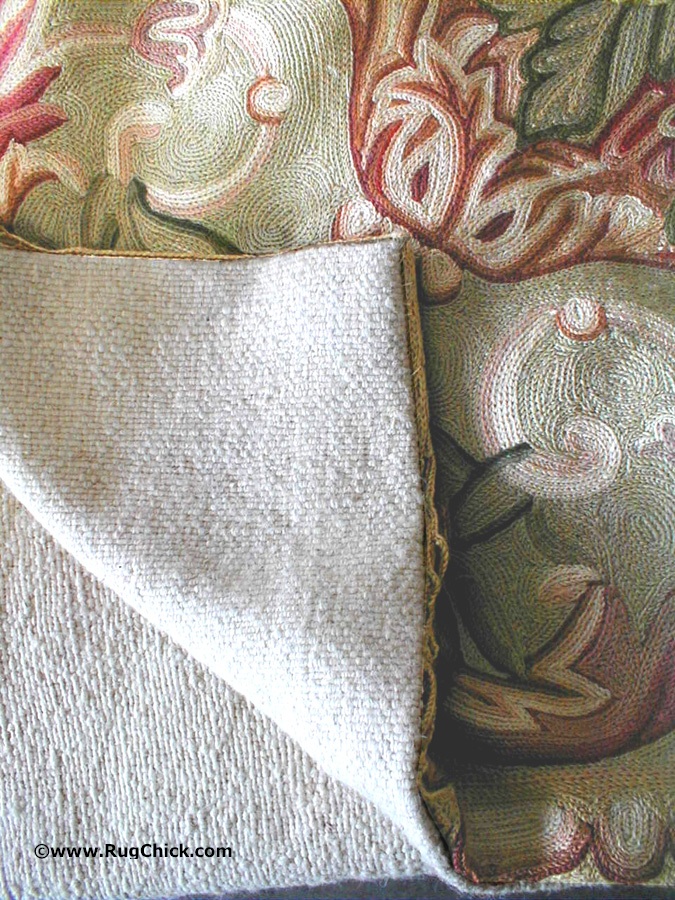
Crewel stitch (aka chainstitch) needlepoint with material backing.
Hand crafted custom rugs using different fabrics and fibers can also lead to buckling, especially along the seams of there the pieces are put together.
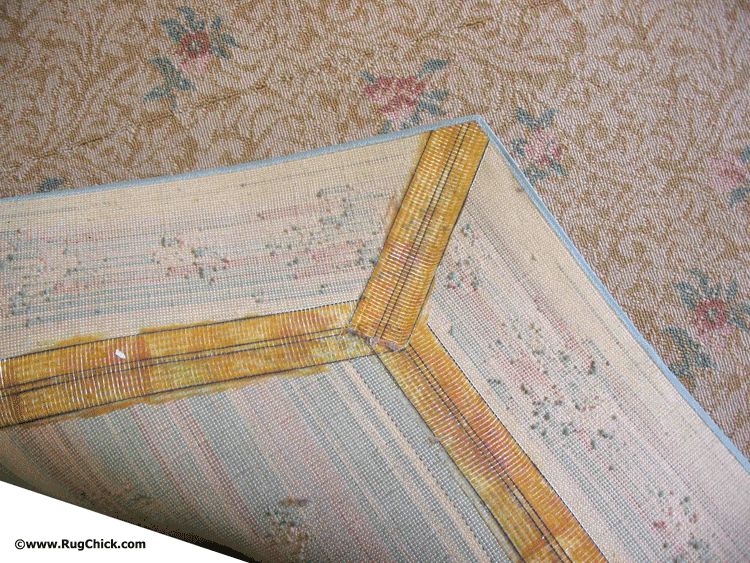
Seam tape can split and buckle.
Seam tape can split under foot traffic, or with age, or from cleaning (especially if the individual piece are made of different fibers and may react differently during the cleaning process. Some fibers swell when wet, others condense. Some are stronger when wet, others are weaker. Some absorb more moisture and dry slowly, others dry quick. And these variances can split a seam if you are not careful.
Tufted Rugs (Latexed Material Backing)
Tufted rugs are the rugs you see with latex holding it together. Latex over time deteriorates and crumbles away, so often it is covered up with material to hide this kind of ugliness:
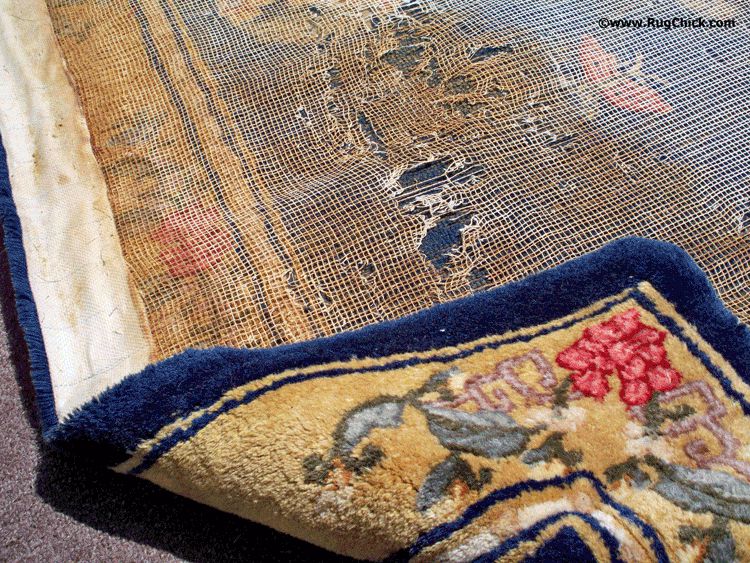
Old latex delaminating on a tufted rug.
Rugs are meant to be on a HARD floor, and not over soft wall-to-wall carpet. But, sometimes a soft floor is your only option.
While woven rugs (rugs you can see the design on the back of the rug same as the front) have some “give” to flex when over a soft floor, a tufted rug is not so forgiving.
Heavy furniture on top of a rug that is over a carpeted floor can stretch the fibers of a woven rug, and in worst cases create tears and holes. And with tufted rugs, which have a latex backing holding them together, they can create waves in the rug you won’t be able to get out.
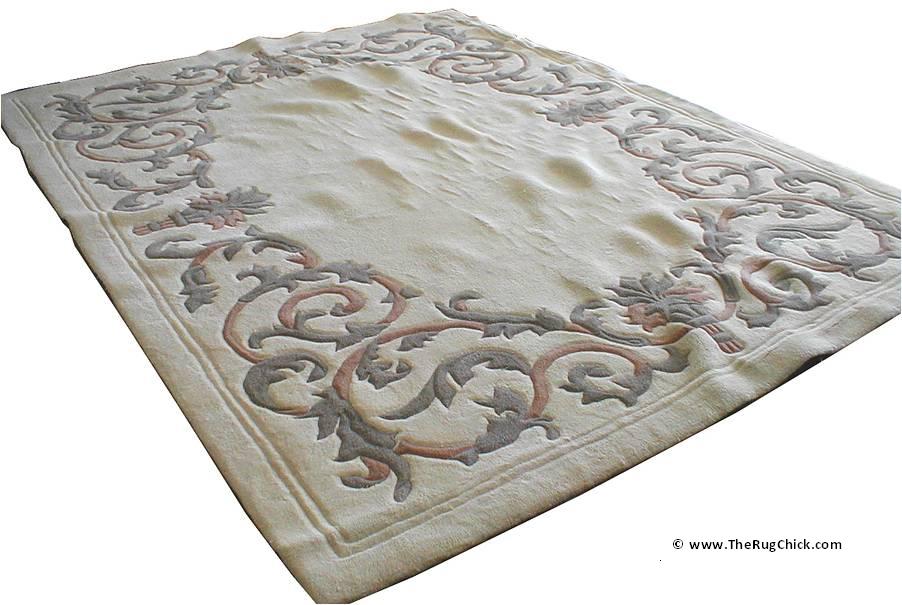
Buckling in a tufted rug from furniture.
With these rugs, once they have been stretched from heavy furniture, and the latex backing cracks and bends, it’s damaged and will be very difficult to make flat again. It’s like when an elastic band gets over stretched, you can’t get it back to its original shape.
With woven rugs, you have a better chance of washing and reshaping a rug that has gotten buckles from furniture. And to protect BOTH types of rugs, short of putting them on top of a hard floor instead, you can seek out a stiff pad to place between the rug and the carpeted floor.
If your rug is tending to want to move and buckle even when it’s on a hard floor, then often a good rug pad will keep you from having any safety risks of people tripping on it. (Plus pads are “shock absorbers” for rugs and keep them from wearing from foot traffic as fast, and they also tend to deter bugs from wanting to find a home under your wool rugs. I personally love Durahold pad for rugs on hard floors.)
Edge Finishes (By Machine or By Hand)
Sometimes the ends or sides of a rug are finished a bit too tightly, or overdone, and this can create curling of a rug.
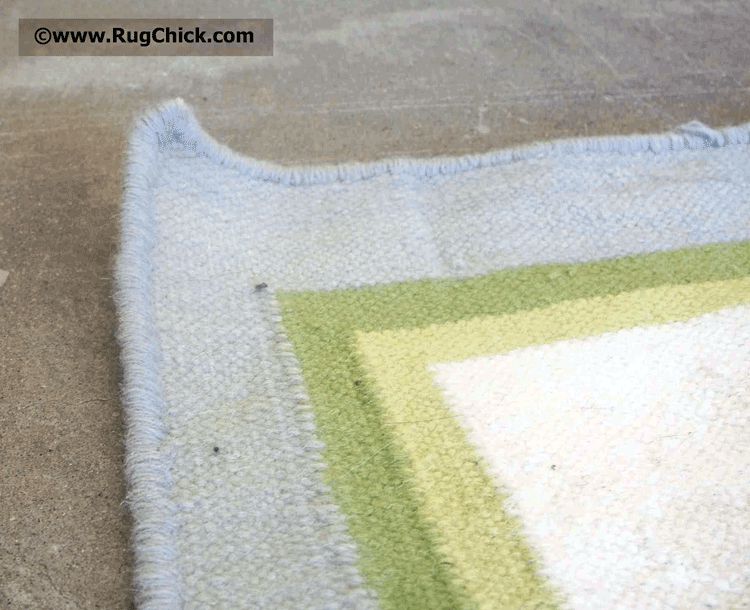
Heavy side cord wrap by hand on this dhurrie rug makes the corners curl up.
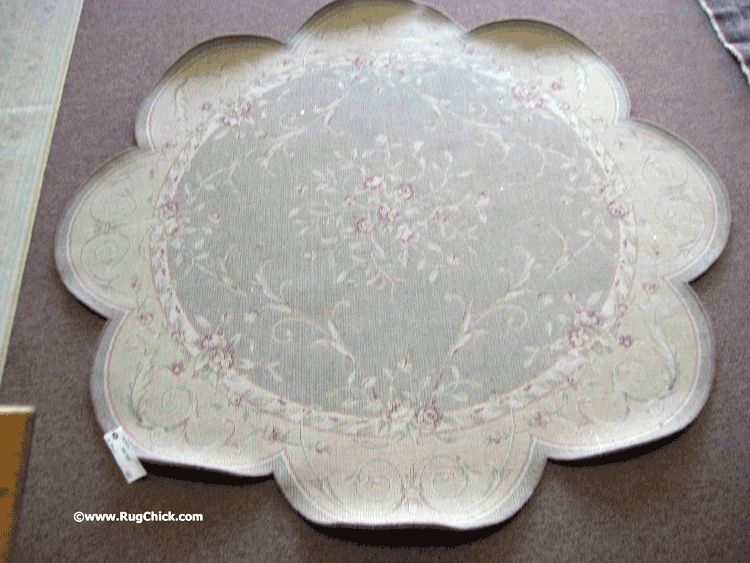
Machine serging of edges created curling of this rug.
The curling may be immediate, or only evident when the rug gets wet or damp. The level of buckling depends on how the fibers react to water. Some fibers get tighter when wet, and loosen when dry. This is especially evident on oriental rugs that are tightly woven, and the cotton foundation fibers tighten up when wet. (Think about your clothes when you take them out of the washer. Your cotton items are smaller and tighter, and your wool items are looser and stretchy. Most woven rugs are wool face fibers twisted around cotton foundation warps and wefts, so “wet” they can create some buckling that will go away when dry.)
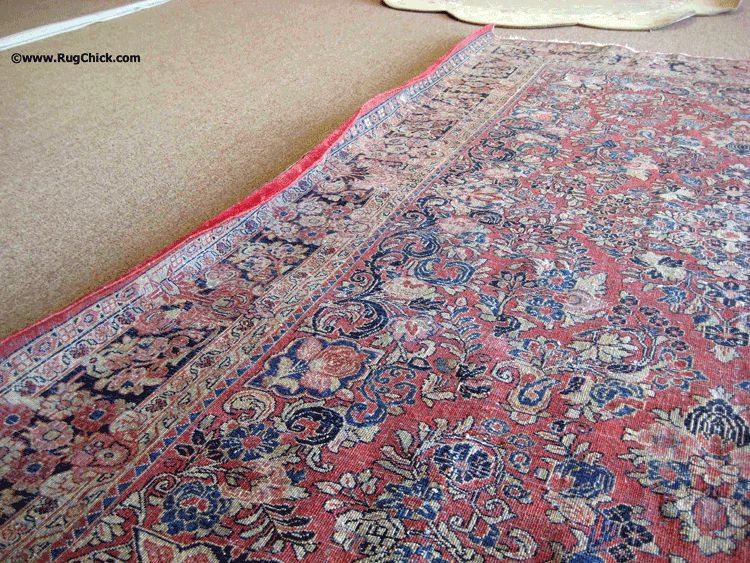
Side curls on this damp Sarouk rug that is drying face down.
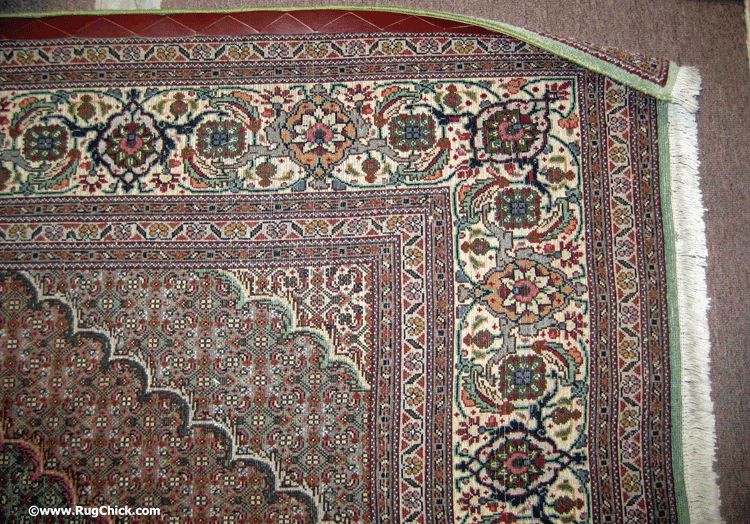
Leather or vinyl strips are sometimes sewn along the sides to help keep them flat on the floor.
If a hand woven wool rug is perfectly flat when dry, but curls when it is wet, then it will regain it’s proper shape when dry. Don’t panic.
An exception is Navajo and other American Indian weavings. Often the outside wrapping threads are not pre-washed before being used in the final weaving, and these strands may shrink a bit during cleaning, which can give the illusion that the overall rug has shrunk, when it is in reality just the outside cords.
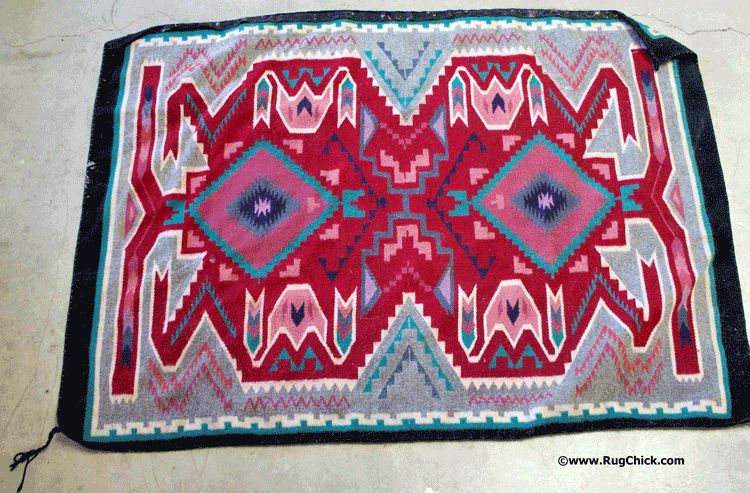
Navajo rug from a flood, the outside cords have shrunk creating a buckling of the rug.
On the very first cleaning of a Navajo rug, the outside cord will need to be adjusted to make up for the shrinking of the cords, and future washes will not be a problem as far as buckling. (There are other concerns when handling American Indian textiles, from potential dye migration to wool fuzzing, that require an expert’s touch when cleaning. These rugs can be quite valuable, so always seek out someone with expertise in handling these pieces, as well as any investment textile or rug.)
Floods and Extraction Equipment
When rugs are exposed to flood water for extended periods of time, buckling can result from the absorption of the water in the cotton foundation fibers. In most cases, this buckling will be correctable. Though you need to follow the right steps to make sure you thoroughly clean and decontaminate any rugs exposed to flood waters. Click here => for tips on handling rugs from floods.
Heavy extraction equipment (Rover and Xtreme Extractor) though excellent at pulling out the water, can sometimes create some buckling on looser woven rugs that may or may not be correctable. Whether it’s this type of equipment, or other extracting wands, it is better on the rug to extract from the BACK of the rug to try to avoid any marks or buckles from equipment. When using a wand it can help to have someone stand on the edge you are extracting to help hold the rug flat while doing the work.
Most rug cleaning facilities have roller or spinner wringers to remove water, which removes the buckling risk. Especially with the rollers, which tend to flatten out the rug smoothly for the drying process. But if extraction is your water removal method, you just want to make sure you are not too aggressive in this step.
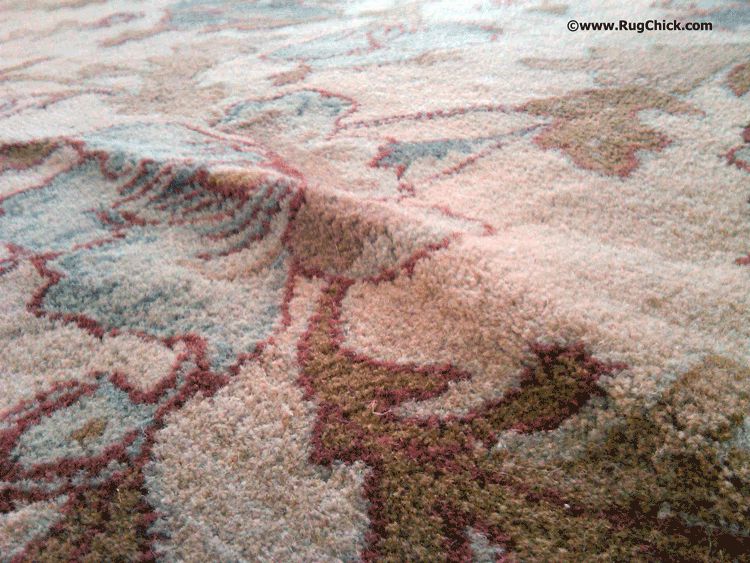
Buckling in field of a rug from extracting.
Hanging Rugs To Dry
There are a couple negatives to hanging rugs up to dry if you do not have a professional climate controlled drying tower like the large rug washing plants have.
Hanging up a rather wet rug can bleed the dyes into the fringe. It can also create browning and discoloring of the fringe.
It can also, from the weight of the water, create a creasing of the rug that is difficult to remove, especially if the rug is tufted.
Some ways to lessen the risks are to try to get as much water out of the rug before hanging. If you do not have large water removal equipment, you can use a Water Claw in addition to your portable or truck mount wand to boost your extracting. The Rover, with its teflon head is excellent at removing water from heftier rugs without leaving any marks (even if you have to extract from the front side). Just make sure the rug is not too fragile.
Instead of hanging rugs on narrow planks, you can place a PVC pipe around the planks so that you can have it curved enough to help prevent creasing. You can also hang the rugs at at angle so there will not be a clean line of where the rug was bent to hang, like this:

Hang rugs at an angle to lessen potential creasing.
We dry our rugs out flat to avoid these risks, but most rug cleaning companies do not have the space to do this. So this helps if you have a mini-rack system that you are using.
These are the most common reasons behind rug buckling, and the situations where something can be done about it… or can’t.
Happy rug cleaning!
-Lisa

